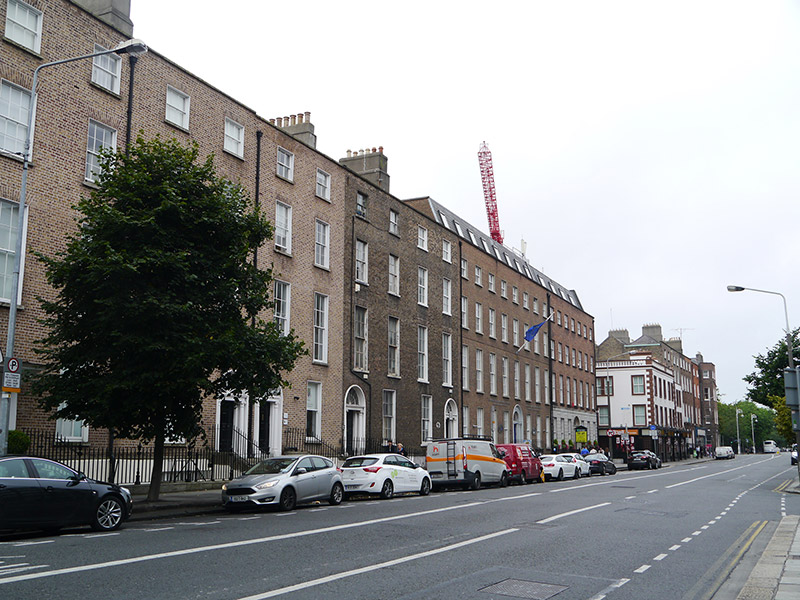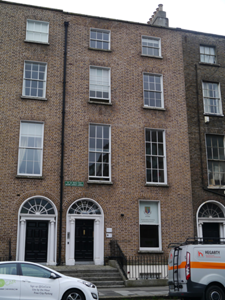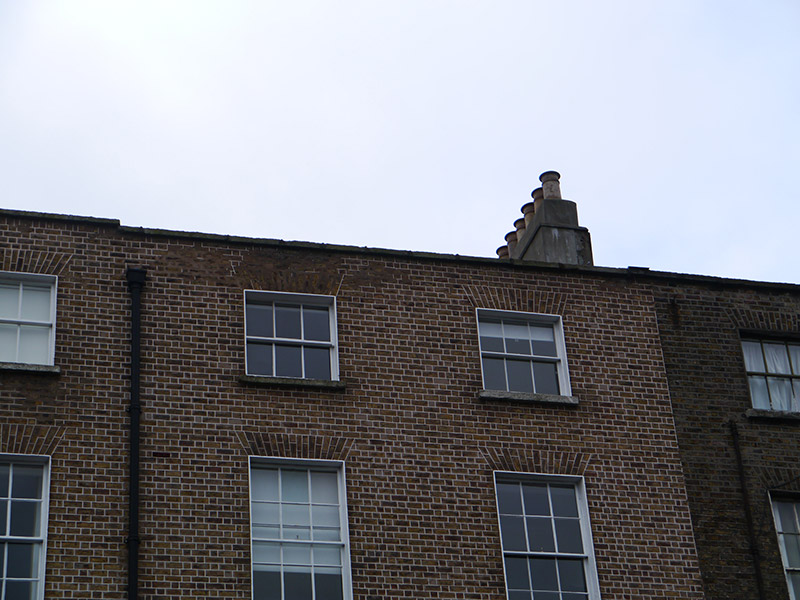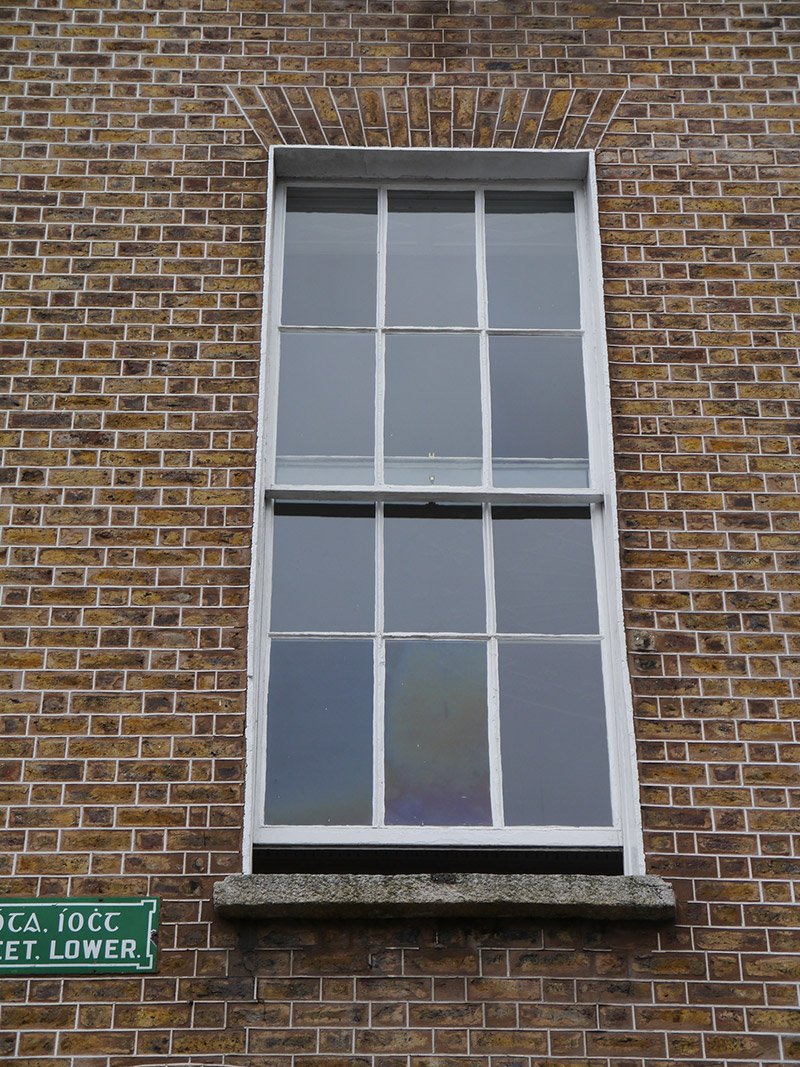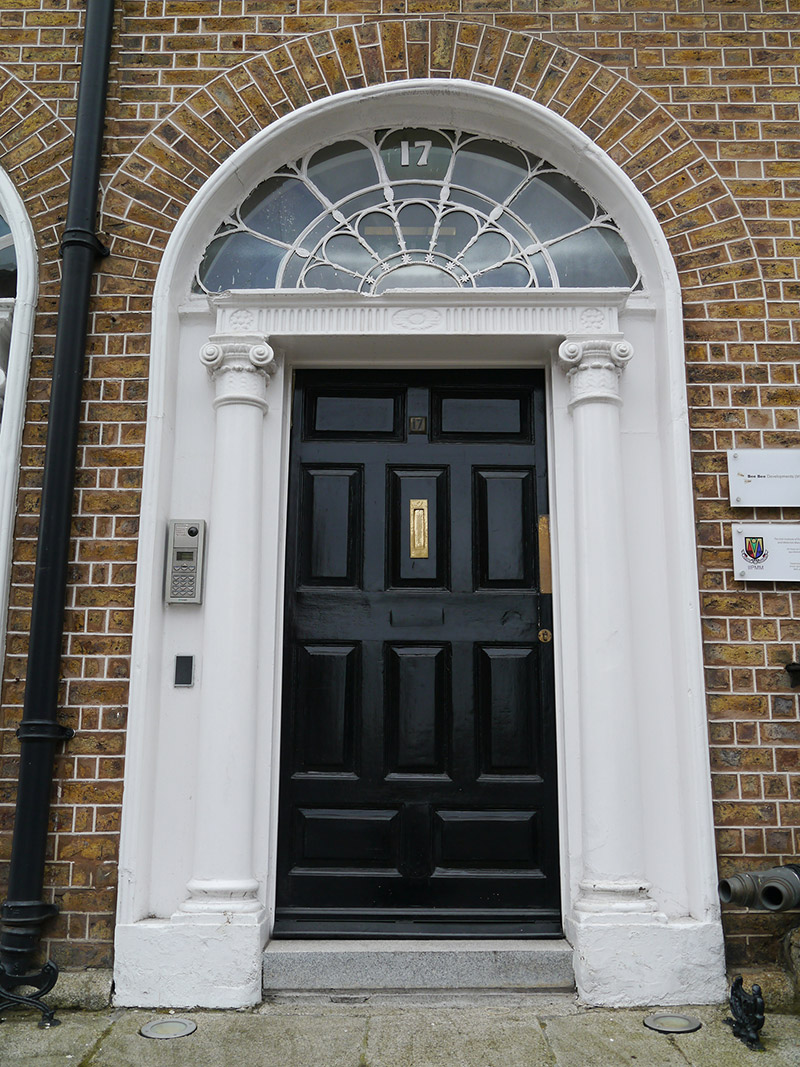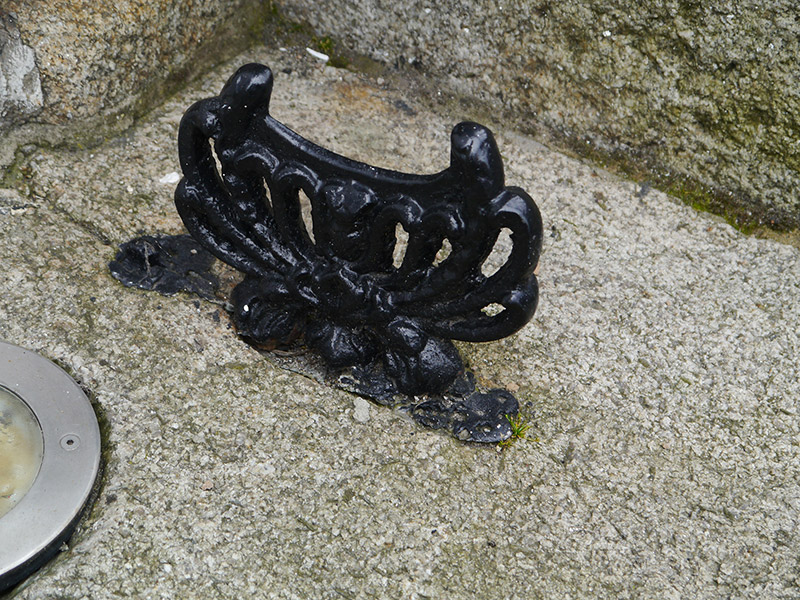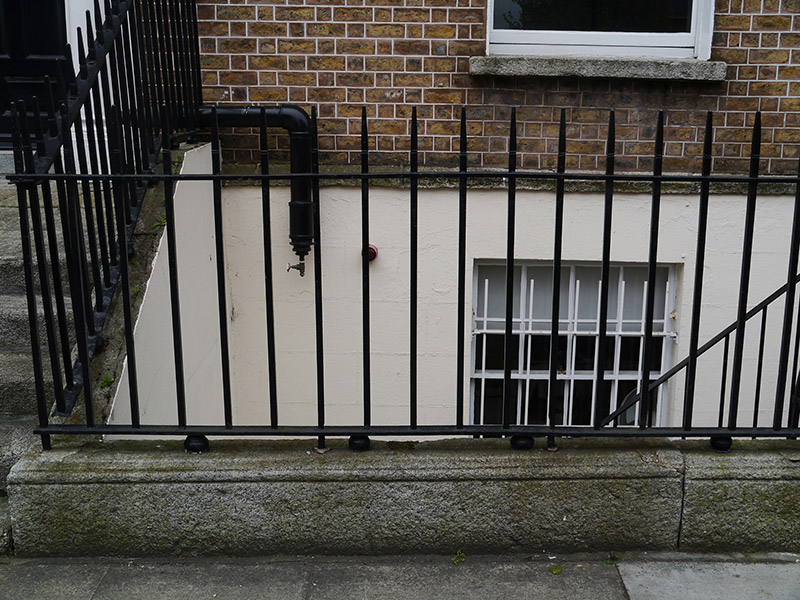Survey Data
Reg No
50100528
Rating
Regional
Categories of Special Interest
Architectural, Artistic
Original Use
House
In Use As
Office
Date
1800 - 1830
Coordinates
316979, 233473
Date Recorded
06/08/2016
Date Updated
--/--/--
Description
Attached two-bay four-storey former house over basement, built c. 1815 as part of terrace (Nos. 15-21), having bowed bay to west end of rear elevation. Converted for use as offices. Pitched roof to front span, hipped to east end, behind brick parapet with granite coping, and two unequal hipped roofs to rear, larger over bow, and having terracotta ridge tiles. Shouldered rendered chimneystacks to east party wall with clay pots. Parapet gutters, and shared replacement cast-iron downpipe. Flemish bond buff brick walling with recent wigged pointing on granite plinth course over painted ruled-and-lined rendered basement walling. Square-headed window openings, diminishing in height to upper floors, with patent reveals and granite sills. Timber sliding sash windows, three-over-three pane to top floor, hornless to west and ogee-horned to east, six-over-six pane hornless to middle floors, replacement one-over-one pane ogee-horned to ground floor, and eight-over-eight pane hornless to basement with steel grille. Round-headed door opening, with painted moulded surround, painted masonry doorcase comprising moulded cornice, fluted frieze with rosettes over engaged columns with Adamesque Ionic capitals, decorative leaded peacock's tail fanlight, raised-and-fielded ten-panel timber door with brass furniture and recent polished granite step. Shared granite entrance platform with decorative cast-iron boot-scrapes and five steps to street. Basement area enclosed by wrought-iron railings on moulded granite plinth; mild-steel steps to basement with plain door opening beneath entrance platform. Recent apartment block to rear half of plot of Nos. 17-21.
Appraisal
A late Georgian house that is relatively well retained with salient features, including elegant proportions, a bowed rear elevation, some early fenestration and a good neo-Classical doorcase featuring a decorative leaded petal fanlight. Due to the widespread construction of late twentieth-century office blocks, only a small number of Georgian buildings survive on Mount Street Lower. This house and its neighbours are therefore of great importance to the streetscape character of this principal Georgian thoroughfare. Initial approval to open Mount Street Lower was obtained from the Wide Streets Commissioners in 1791, with the principal developers, Crosthwaite and Grant, having purchased land from Samuel Sproule. Although their building efforts were praised in 1796, building was halted until the early nineteenth century, due to recession, and progressed slowly with only 29 houses completed by 1834.
